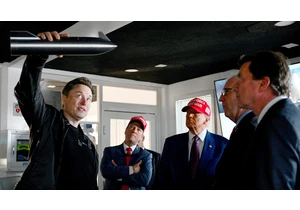A group of autonomous vehicle developers are pressuring California lawmakers to introduce a regulatory process that would eventually allow autonomous trucks on public roads.
Thirty-five autonomous vehicle leaders including Waymo, Uber, Volvo, and Aurora signed an open letter last week addressed to California Governor Gavin Newsom, arguing that if California does not soon permit testing of autonomous trucks on public roads, it could lose its competitive edge.
While California has allowed for the testing of smaller, autonomous vehicles on public roads since 2019, semi-trucks and delivery vehicles weighing more than 10,001 pounds remain prohibited. California figures as an important testing ground for autonomous vehicles for two reasons: Not only is the state an innovation hub for self-driving technology, but it’s also the home of several highways that connect multiple key cross-country freight routes.
California’s plans for allowing autonomous trucking still remain unclear. “The DMV plans to work with the California Highway Patrol on developing regulations governing autonomous vehicles weighing more than 10,001 pounds, but has not established a timetable for that rulemaking process,” a spokesperson for the California DMV writes in an email.
Any state-level legislation around autonomous vehicles has stalled since 2012, meaning that autonomous vehicle makers—many of which are located in California—have had to develop and test out key technology like driverless semi-trucks in states with more accommodating legislature.

In recent years, the advent of autonomous trucking has been a contentious issue, with some critics worrying that autonomous trucks could displace scores of truck driving jobs in the future; a recent study by researchers at the University of Michigan and Carnegie Mellon University found that autonomous trucks could replace 90% of America’s truck drivers in upcoming years.
But industry leaders argue that driverless trucks will mitigate the supply-chain crisis exacerbated by the pandemic and fill in the gaps left by a growing demand for more and more truck drivers in the U.S. According to the American Trucking Association, there’s a current shortage of nearly 80,000 truck drivers that’s projected to skyrocket to a shortage of 160,000 drivers by 2030.
“There are tremendous opportunities for AV trucks to improve safe and efficient movement of goods in California,” says Emily Loper, a policy director for the Bay Area Council, a business advocacy nonprofit. “In the Bay Area, we’re the home of this innovation, and we’d like to see this start to be tested and deployed here in order to realize the benefits.”
Login to add comment
Other posts in this group

When it comes to sharing Instagram Reels with friends, the process of three taps to get a Reel from A to B can feel surprisingly tedious. Now, Instagram has addressed that issue with its latest fe

New Jersey filed a lawsuit against Discord on Thursday, alleging that the social platform recklessly exposed children to “harassment, abuse, and sexual exploitation by predators who lurk on

Google has acted illegally to maintain a dominant position in online advertising, a federal judge ruled on Thursday. The tech giant’s “exclusionary conduct substantially harmed Google’s publisher

Welcome to AI Decoded, Fast Company’s weekly newsletter that breaks down the most important news in the world of AI. You can sign up to receive this newsletter ever


Elon Musk’s SpaceX and two partners have emerged as frontrunners to win a crucial part of President Donald Trump’s “Golde

A new watchdog report uncovers Facebook groups quietly fueling a black market fo
